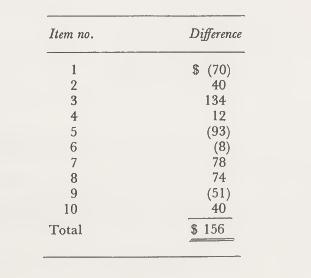For a number of years, the accounts receivable confirmation process at Johns Printing Company has been more
Question:
For a number of years, the accounts receivable confirmation process at John’s Printing Company has been more time-consuming than is considered desirable. Typically, about 20% of the 500 active accounts were sent positive confirmations. About 70% of these were returned either initially or after a second request, but these represented only about 40% of the dollar amount. The problem was that larger customers had as many as 100 invoices listed on their statements, and they were simply unwilling to take the time to check the detail. Considerable time had to be spent following up on these items.
In an attempt to combat this problem, you have decided to redefine the population ofaccounts receivable this year. Specifically, you have defined the population of accounts receivable as the 4,000 individual invoices listed by the open invoice system. The total book value of accounts receivable (open invoices) is \($875,350\). You feel an error of \($25,000\) would be material. The internal control system and prior-year results are such that you set Beta risk at 10%. The cost of selecting and sending out an additional sample of confirmations would be high, so you want an Alpha risk of only 10%.
Based on prior years’ work and this year’s tests of invoices for other purposes, you estimate the standard deviation of the population of errors at \($17\). Your advance estimate of the point estimate of the population error is \($4,000.\)
a. What is the sample size necessary to achieve your audit objectives ?
b. Ignoring your answer to part a, assume that you select a sample of 80 invoice amounts. Confirmations are mailed, and 80% are returned either initially or after a second request. Alternative procedures are used to evaluate the remaining invoices in the sample. Based on these confirmations and tests, the following errors are noted:

Calculate the confidence interval at the required confidence level based on the sample results.
c. Graph the materiality requirements and the confidence limits calculated in part b. What is the appropriate audit conclusion about the population?
d. Explain the conclusion in c, given the actual sample size compared to the planned sample size, the actual standard deviation compared to the expected standard deviation, and the actual point estimate compared to the expected point estimate.
Step by Step Answer:

Applications Of Statistical Sampling To Auditing
ISBN: 9780130391568
1st Edition
Authors: Alvin A. Arens, James K. Loebbecke




